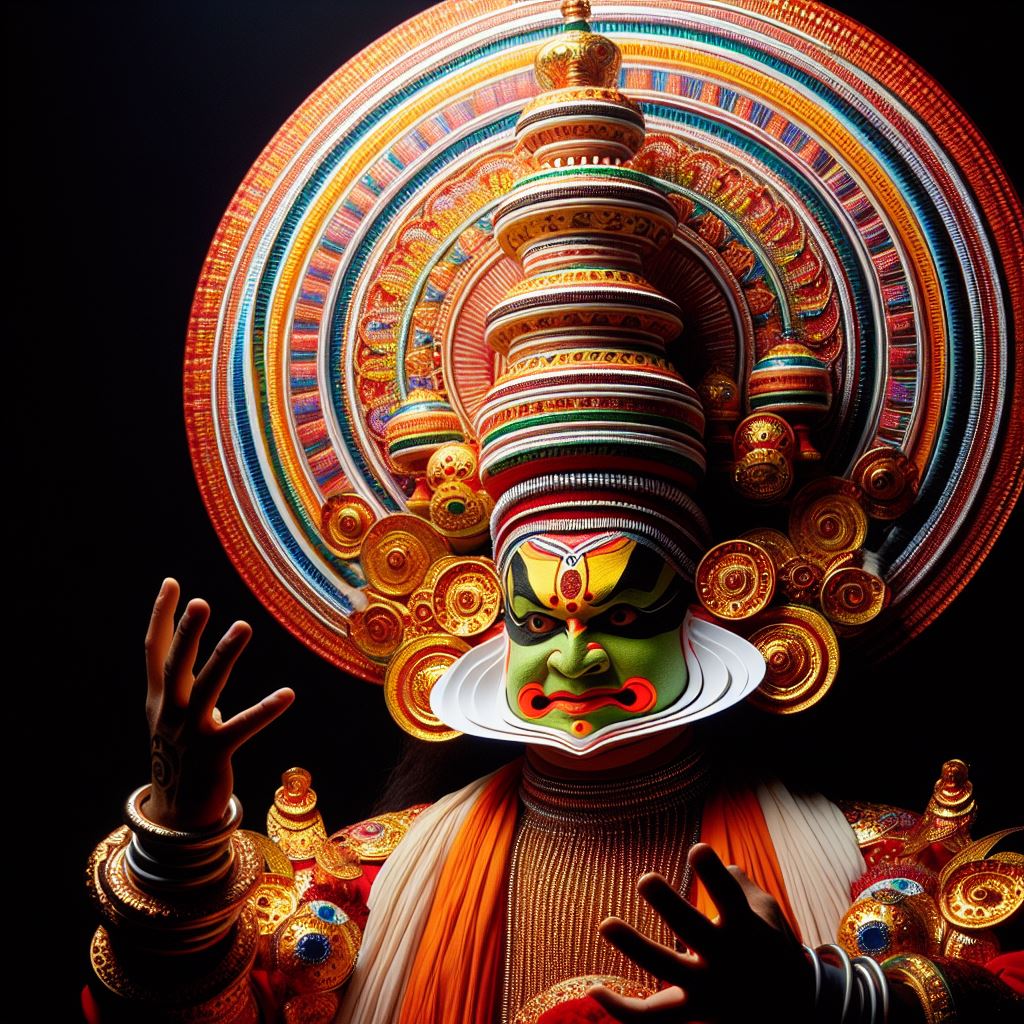Introduction:
Welcome to the mesmerizing world of Kathakali, an ancient dance-drama form that originated in the southern state of Kerala, India. Kathakali is renowned for its elaborate makeup, intricate costumes, and expressive storytelling, making it one of the most visually stunning and emotionally captivating art forms in the world. In this blog post, we delve into the rich history, unique elements, and cultural significance of Kathakali.
Origins and Evolution:
Kathakali traces its origins back to the temples of Kerala, where it emerged as a form of ritualistic performance depicting stories from Hindu mythology. Over time, Kathakali evolved into a sophisticated art form, incorporating elements of dance, music, drama, and mime to create a powerful narrative experience. Influenced by ancient Sanskrit dramas and folk traditions, Kathakali became a favored form of entertainment in the royal courts and cultural festivals of Kerala.
Technique and Expression:
At the heart of Kathakali lies its expressive technique, which combines intricate facial expressions (rasas), hand gestures (mudras), and body movements to convey a wide range of emotions and narratives. The performers undergo rigorous training to master the nuances of Kathakali, learning how to embody different characters from Hindu epics such as the Ramayana and Mahabharata. The elaborate makeup (chutti) and costumes (vesham) further enhance the visual impact of Kathakali, transforming the performers into divine beings, demons, and mythical creatures.
Themes and Stories:
Kathakali encompasses a vast repertoire of stories, ranging from tales of gods and goddesses to legends of valor, love, and betrayal. Each performance is structured around a specific episode or character from Hindu mythology, with the narrative unfolding through a series of expressive gestures, vocal recitations, and rhythmic drumming. Whether depicting the epic battles of Lord Rama or the divine love of Radha and Krishna, Kathakali transports audiences to the mythical realms of ancient India, evoking a sense of wonder and awe.
Preservation and Revival:
Despite its ancient origins, Kathakali continues to thrive as a vibrant and living tradition in Kerala and beyond. Efforts are underway to preserve and promote Kathakali through training academies, cultural institutions, and international collaborations. Modern adaptations and innovations have also helped Kathakali reach new audiences, ensuring that this timeless art form remains relevant and cherished for generations to come.
Conclusion:
In conclusion, Kathakali stands as a testament to the rich cultural heritage and artistic excellence of Kerala, India. Through its elaborate costumes, expressive gestures, and immersive storytelling, Kathakali captivates audiences with its timeless tales of gods, demons, and heroes. As we celebrate the legacy of Kathakali, let us continue to cherish and preserve this ancient art form, ensuring that its beauty and significance endure for centuries to come.

